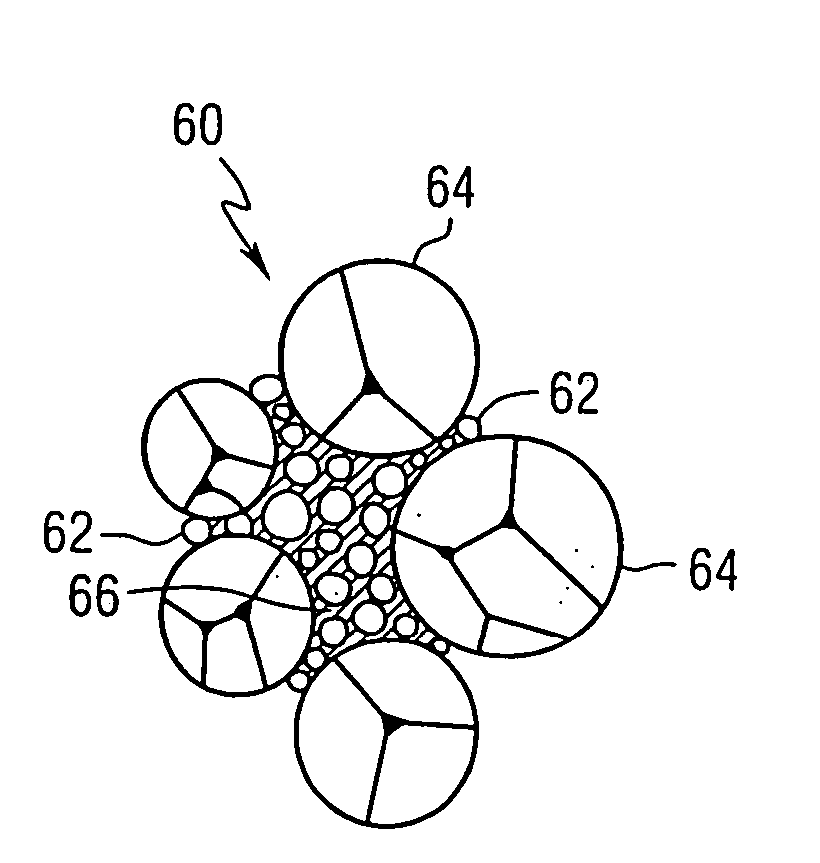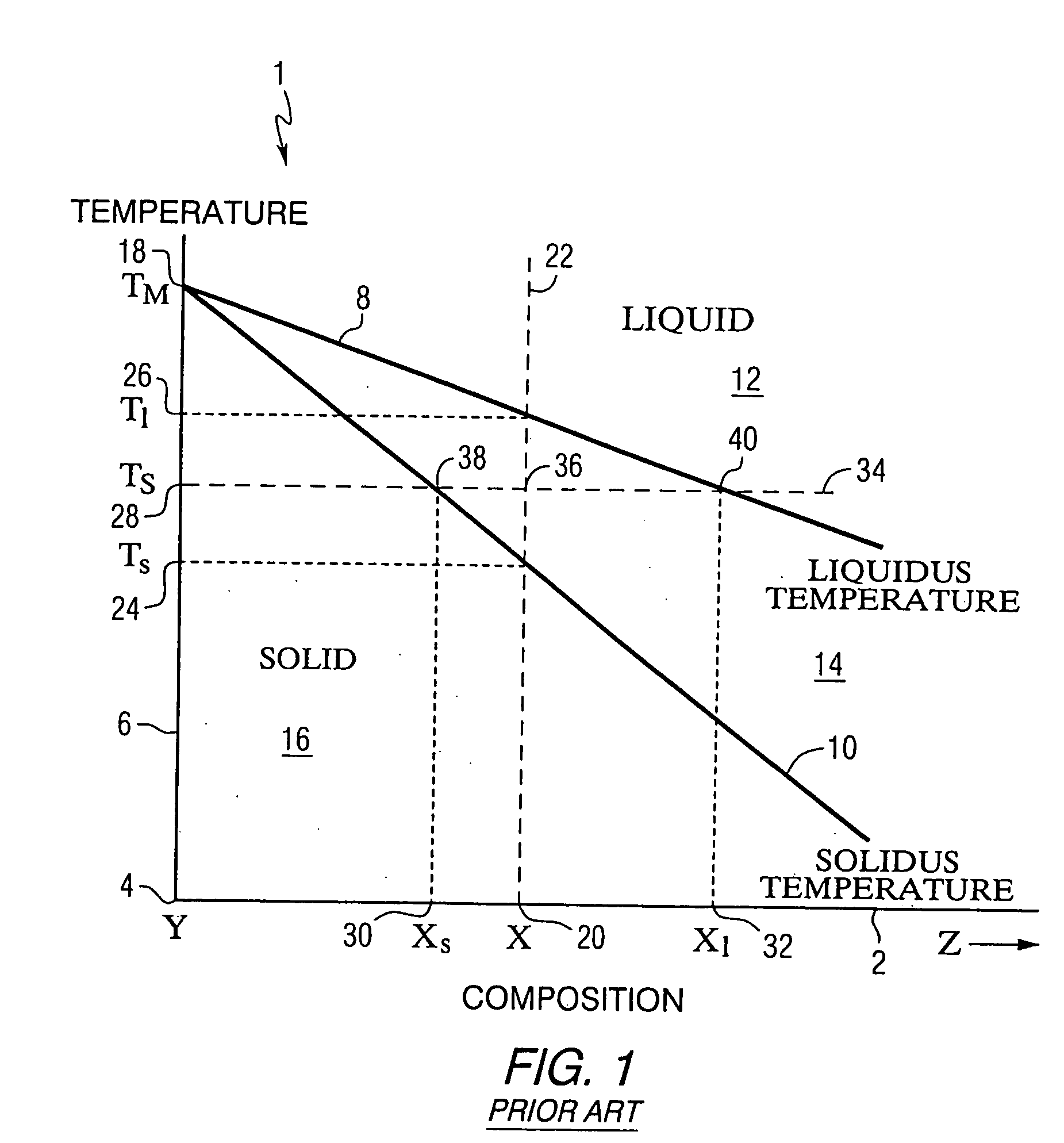Blended powder solid-supersolidus liquid phase sintering
- Summary
- Abstract
- Description
- Claims
- Application Information
AI Technical Summary
Benefits of technology
Problems solved by technology
Method used
Image
Examples
example 1
[0065] A-B powder mixtures were prepared using pure copper powder (vendor grade designation, 2000; 99.0% purity) as the relatively fine metal powder A and a bronze alloy (vendor grade designation, 40P) as the relatively coarse powder B. The composition of the bronze alloy was, in weight percent: 9.23% tin, 0.0496% phosphorus, balance copper. The copper and the bronze powders were spherical powders obtained from AcuPowder International, LLC, of Union, N.J., U.S. The copper powder had a mean particle size of about 5 microns and the bronze powder had a mean particle size of about 118 microns as measured on a laser diffractometry particle size analyzer. Thus, the A-B powder particle size ratio was 23.6. Differential scanning calorimetry measurements showed the solidus temperature of the bronze powder to be 850° C. and its liquidus temperature to be 1016° C. The melting point of the copper powder was taken to be that of pure copper, that is, about 1083° C., which exceeds the liquidus tem...
example 2
[0072] In Example 1, it was determined that a powder mixture of 31 volume percent copper powder and 69 volume percent bronze powder (blend 5) yielded the highest green relative density of the blends tested. In the present example, additional green article samples were prepared using this blend 5 powder mixture and using the bronze powder (blend 1) in the manner described in Example 1. The samples were sintered at temperatures ranging from 550 to 960° C. to determine sintering temperature sensitivity. Density measurements were made on the samples after sintering and are tabulated in Table 3.
[0073] The results show that the copper-bronze powder mixture samples sintered to a higher density at each sintering temperature than did the bronze powder samples. This demonstrates that a desired relative density can be achieved at a lower temperature with the blend 5 samples. For example, while a sintering temperature of 930° C. was required to achieve a relative density of 80% for a bronze po...
example 3
[0075] A-B powder mixtures were prepared using commercially pure nickel powder (carbonyl-derived nickel powder) as the relatively fine metal powder A and a nickel alloy (vendor grade designation, Superbond 625) as the relatively coarse prealloyed metal powder B. The nickel alloy powder was spherical and had a composition, in weight percent, of 21% chromium, 9% molybdenum, 4% columbium, 0.1% carbon, and balance nickel and was obtained from ANVAL Inc., of Rutherford, N.J., U.S. The pure nickel alloy was of spherical particle shape and was obtained from Chemalloy Company, Inc., of Bryn Mawr, Pa., U.S. The pure nickel powder had a mean particle size of about 10 microns and the nickel alloy powder had a mean particle size of about 79 microns as measured on a laser diffractometry particle size analyzer. Thus, the A-B powder particle size ratio was about 1:8. Differential scanning calorimetry measurements showed the solidus temperature of the nickel alloy powder to be 1270° C. and the liqu...
PUM
| Property | Measurement | Unit |
|---|---|---|
| porosity | aaaaa | aaaaa |
| volume fraction | aaaaa | aaaaa |
| volume fraction | aaaaa | aaaaa |
Abstract
Description
Claims
Application Information
 Login to View More
Login to View More - R&D
- Intellectual Property
- Life Sciences
- Materials
- Tech Scout
- Unparalleled Data Quality
- Higher Quality Content
- 60% Fewer Hallucinations
Browse by: Latest US Patents, China's latest patents, Technical Efficacy Thesaurus, Application Domain, Technology Topic, Popular Technical Reports.
© 2025 PatSnap. All rights reserved.Legal|Privacy policy|Modern Slavery Act Transparency Statement|Sitemap|About US| Contact US: help@patsnap.com



